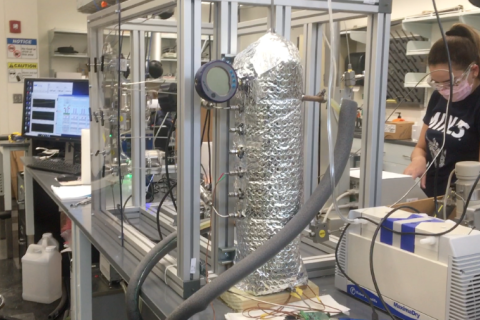The U.S. is not self-sufficient in energy—yet—but it’s getting closer, according to the U.S. Energy Information Administration (EIA). Domestically produced energy from all sources last year provided the largest share of the nation’s power needs in three decades.
That trend will continue in the foreseeable future, the EIA projected in its recently released “Annual Energy Outlook 2014.”
“Growing domestic production of natural gas and oil continues to reshape the U.S. energy economy, largely as a result of rising production from tight formations, but the effect could vary substantially depending on expectations about resources and technology,” the report said.
For 2013, the nation provided 81.7 quadrillion Btus of domestically produced energy from all sources for at-home needs, or 84% of the 97.5 quadrillion Btus consumed. That’s a marked increase in domestic supply as the development of unconventional crude and gas continues to expand. “At the same time, reduced road travel, improved vehicle efficiency and competition among fuels for electric power generation have limited consumption of petroleum and coal,” the EIA reported in a separate analysis of domestic energy production.
A historic low came in 2005 when only 69% of the domestic energy consumed came from U.S. sources. The number has been rising steadily since.
The U.S. was last a net energy exporter in 1957.
“The last significant rise in the ratio of domestic production to consumption occurred from 1978 to 1982,” the EIA said. “During that period, oil consumption declined in response to higher prices and changing policies, and production rose as oil started to flow from Alaska’s North Slope. At the same time, domestic coal production was increasing.” The peak of that increase brought domestic supply to about the 2013 level. However, domestic energy production began slowly dropping in the mid 1980s to its 2005 nadir.
Petroleum supplied 36% of the nation’s energy needs in 2013 while gas fueled 27%. Coal’s share stood at 19%. For the first time, renewable energy—which includes hydroelectric along with wind, solar, biomass, etc.—edged out nuclear power. Renewables supplied 10% of energy used while nuclear stood at 8%.
Electricity generation absorbed the biggest share of U.S. energy usage, some 39% of total consumption. Transportation was next at 28% with industrial consumption at 22%. Residential and commercial energy consumption took the balance, 11%.

Source: U.S. Energy Information Administration
Recommended Reading
Defeating the ‘Four Horsemen’ of Flow Assurance
2024-04-18 - Service companies combine processes and techniques to mitigate the impact of paraffin, asphaltenes, hydrates and scale on production—and keep the cash flowing.
Going with the Flow: Universities, Operators Team on Flow Assurance Research
2024-03-05 - From Icy Waterfloods to Gas Lift Slugs, operators and researchers at Texas Tech University and the Colorado School of Mines are finding ways to optimize flow assurance, reduce costs and improve wells.
AI Poised to Break Out of its Oilfield Niche
2024-04-11 - At the AI in Oil & Gas Conference in Houston, experts talked up the benefits artificial intelligence can provide to the downstream, midstream and upstream sectors, while assuring the audience humans will still run the show.
Axis Energy Deploys Fully Electric Well Service Rig
2024-03-13 - Axis Energy Services’ EPIC RIG has the ability to run on grid power for reduced emissions and increased fuel flexibility.
Curtiss-Wright to Deploy Subsea System at Petrobras' Campos Field
2024-02-12 - Curtiss-Wright and Petrobras will combine capabilities to deploy a subsea canned motor boosting system at a Petrobras production field in the Campos Basin.





